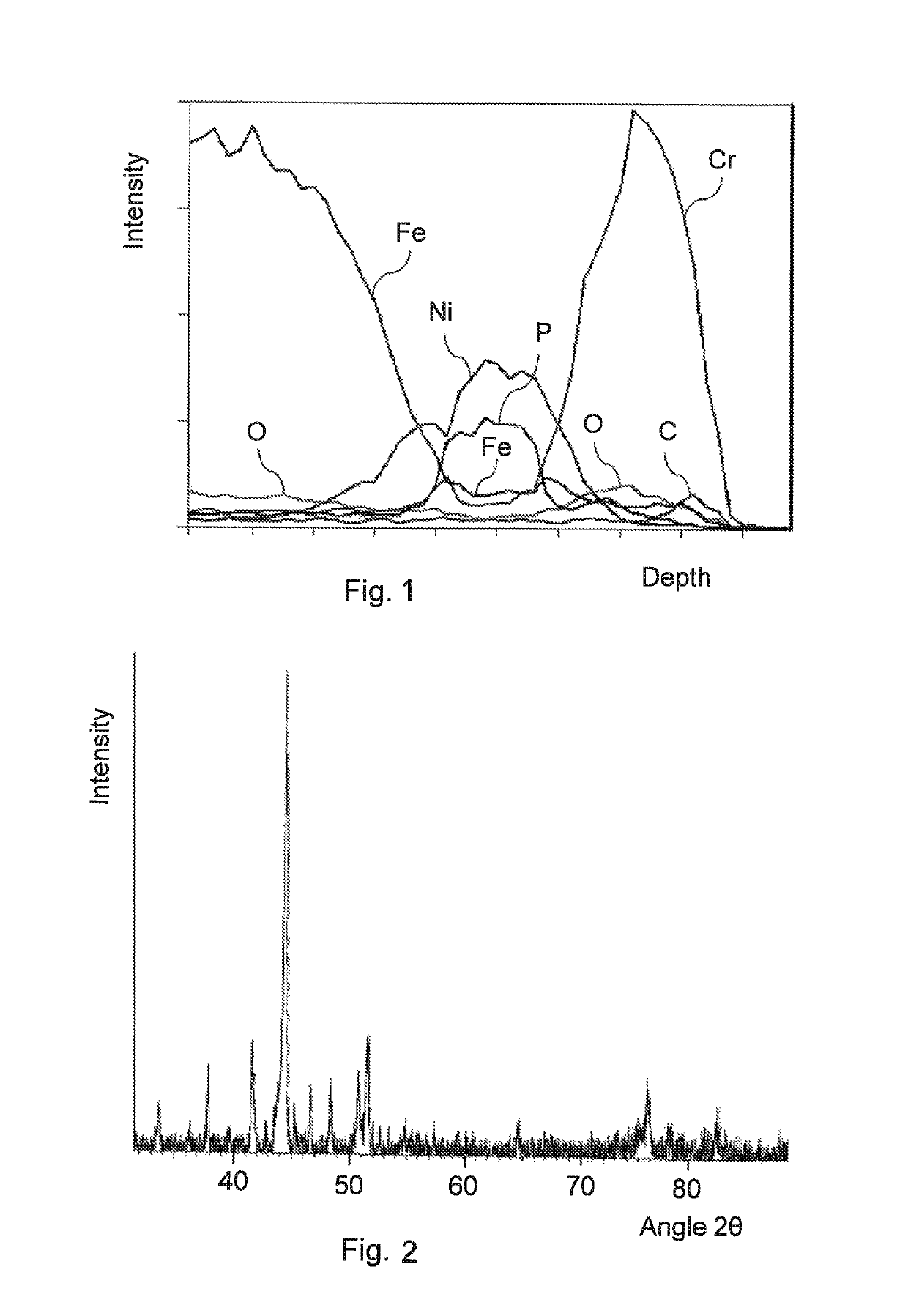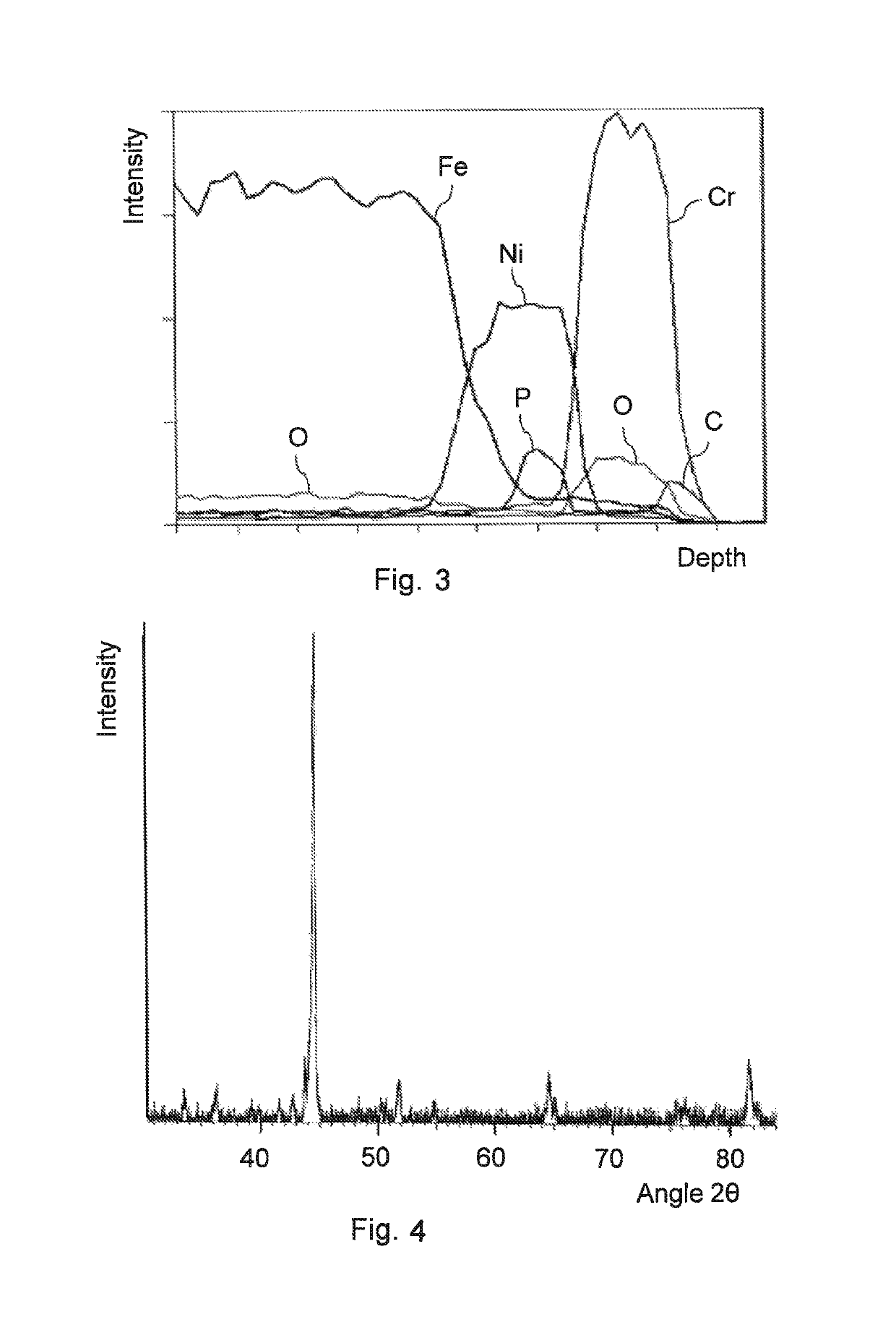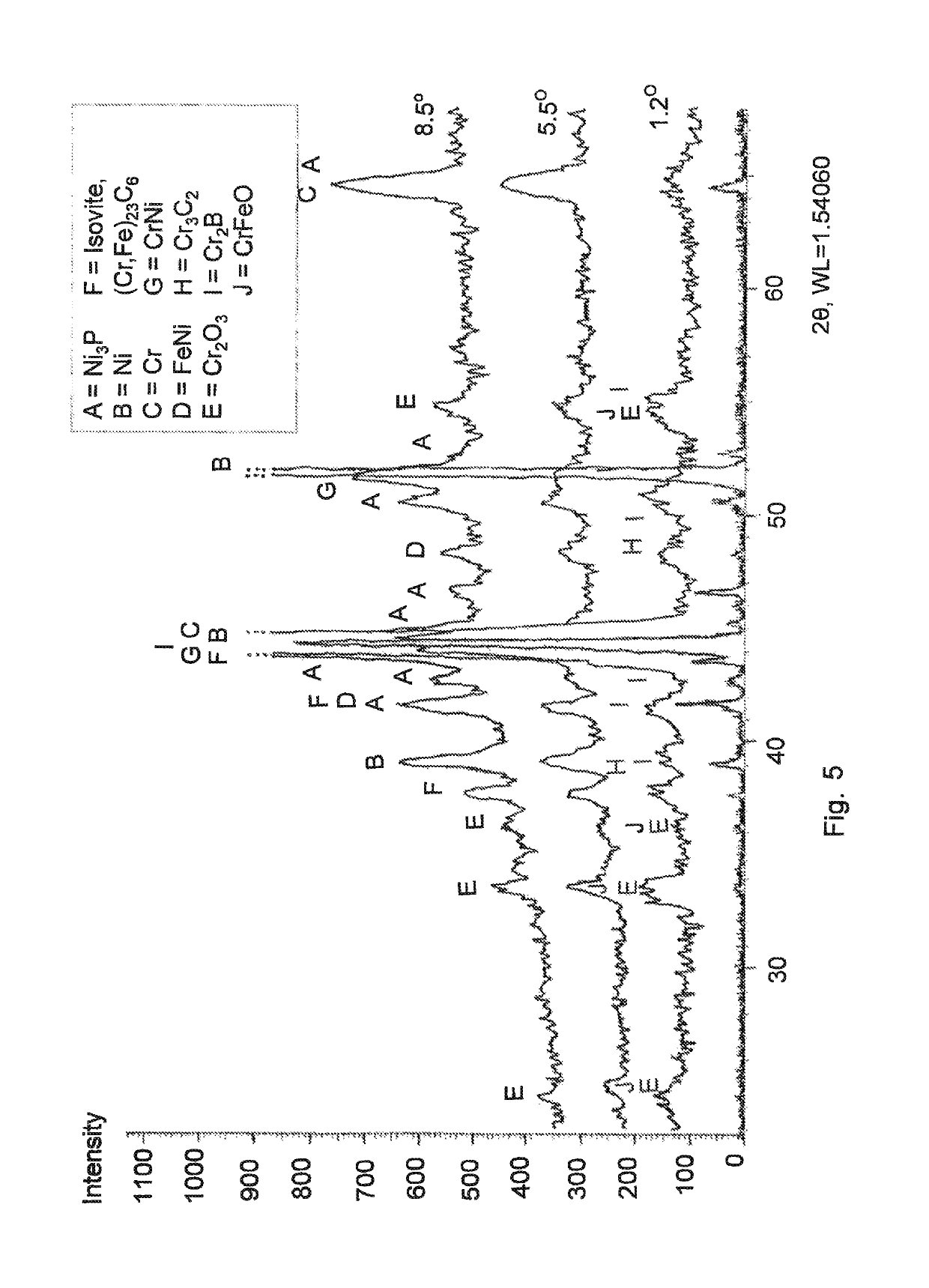Method for producing a chromium coating and a coated object
a technology of chromium coating and coating object, which is applied in the direction of superimposed coating process, vacuum evaporation coating, coating, etc., can solve the problems of high toxic nature of the process, inability to produce coatings through trivalent chromium solutions at industrial scale, and inability to produce coatings. , to achieve the effect of fast production of intense, localized and controllable heat, and improved mechanical and chemical properties of coated objects
- Summary
- Abstract
- Description
- Claims
- Application Information
AI Technical Summary
Benefits of technology
Problems solved by technology
Method used
Image
Examples
example 1
[0065]Several steel objects were coated with a NiP layer of 7 μm and a Cr layer of 4 μm, after which the coated objects were subjected to double heat treatment sequence. The first heating step was carried out at a temperature between 200° C. and 700° C. for 30 or 45 minutes, after which the coated object was cooled. The second heating step of the same sample was carried out at a temperature between 400° C. and 700° C. with duration between 5 and 30 minutes, after which the coated object was cooled again.
[0066]The hardness values of the coated and heat-treated objects were measured by Vickers hardness test in micro range using indenter weights of 5, 10 or 25 g depending on the thickness of coating. The test was carried out according to EN-ISO 6507.
[0067]The corrosion resistance of the coated and heat-treated objects was measured by Acetic Acid Salt Spray Test (AASS) according to SFS-EN ISO 9227.
[0068]The friction coefficients of the coated and heat-treated objects were measured with ...
example 2
[0076]A steel object was coated with a NiP layer of 7 μm and a Cr layer of 4 μm. Heat treatments were carried out in two steps: the first step took 45 minutes at 400° C. and the second step took 30 minutes at 700° C.
[0077]The Vickers microhardness values measured from the coated object after double heat treatment were about 2500 HV, measured with a load of 10 g.
[0078]A layered structure could be identified in a cross-sectional micrograph of the coated surface. The composition of the coating was analyzed by energy-dispersive X-ray spectroscopy (EDS) by having an electron beam follow a line on the sample image and generating a plot of relative proportions of previously identified elements along that spatial gradient. FIG. 1 shows the EDS spectrum of the sample. The steel substrate is on the left side of the graph and the surface of the coating is on the right side of the graph.
[0079]The following layers can be identified in the sample, proceeding from the steel substrate toward the ou...
example 3
[0088]Another steel object was coated with a similar coating as in Example 2, the coating comprising a NiP layer of 7 μm and a Cr layer of 4 μm. Heat treatment was carried out in two steps: a first step of 30 minutes at 400° C. and a second step of 30 minutes at 700° C.
[0089]The Vickers microhardness values measured from the coated and heat-treated object were in the range of 2500-3000 HV, measured with a load of 10 g.
[0090]A layered structure could be identified in a cross-sectional micrograph of the coating. FIG. 3 shows the EDS of the sample. The following layers could be identified in the sample, proceeding from the steel substrate toward the outer surface of the coating:[0091]a layer rich in Fe (steel substrate),[0092]a layer mainly containing Fe and Ni,[0093]a layer mainly containing Ni and P,[0094]a layer mainly containing Ni and Cr,[0095]a layer mainly containing Cr and O,[0096]a layer mainly containing Cr and C.
[0097]FIG. 4 shows a part of the XRD spectrum of the sample.
[00...
PUM
| Property | Measurement | Unit |
|---|---|---|
| temperature | aaaaa | aaaaa |
| temperature | aaaaa | aaaaa |
| temperature | aaaaa | aaaaa |
Abstract
Description
Claims
Application Information
 Login to View More
Login to View More - R&D
- Intellectual Property
- Life Sciences
- Materials
- Tech Scout
- Unparalleled Data Quality
- Higher Quality Content
- 60% Fewer Hallucinations
Browse by: Latest US Patents, China's latest patents, Technical Efficacy Thesaurus, Application Domain, Technology Topic, Popular Technical Reports.
© 2025 PatSnap. All rights reserved.Legal|Privacy policy|Modern Slavery Act Transparency Statement|Sitemap|About US| Contact US: help@patsnap.com



